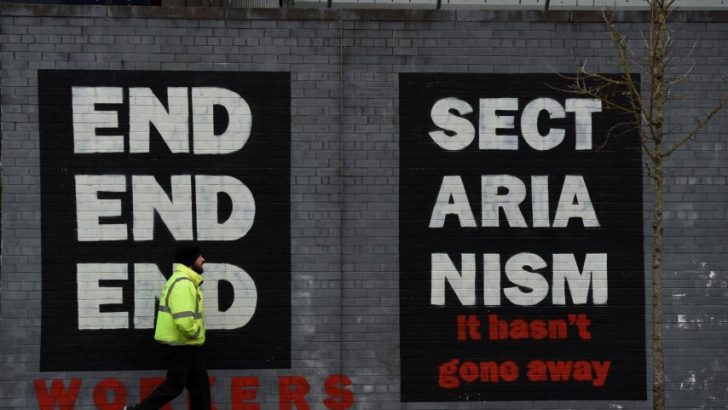“It would be easy, but wrong, always to assume that all that matters is the faith that people die in,” writes Martin Mansergh
The commemoration of the 1916 Easter Rising has been uplifting, and has attracted wide public interest, support and enthusiasm. Fortuitously, its timing has filled a gap in public life created by the delay in forming a new government. There is something ironic about one provisional government honouring another across a gap of 100 years, while looking forward to providing a more permanent one. What public support and participation in the commemoration encouragingly demonstrate is an underlying unity and cohesion in this society, notwithstanding the fractured electoral outcome.
The Requiem Mass presided over by the Primate of All-Ireland Archbishop Eamon Martin and the following State commemorative ceremonies at Arbour Hill, the burial place of 14 of those executed as leaders (though Willie Pearse clearly wasn’t one of them), were held on the exact centenary of the start of the Rising on April 24. The Mass was about more than just remembering a pivotal event in Irish history. It also reflected the strong religious character and convictions that permeated the leadership and united them at the end.
While the leaders of the Rising were all Catholics, many of them, including five out of the seven signatories of the Proclamation, had encountered other religious traditions in the background of a spouse or a parent. The father of the Pearse brothers, James Pearse, had been brought up as an English Methodist, before becoming Catholic after he came to Ireland, where he developed a substantial business as a monumental sculptor.
In a fragment of autobiography, Patrick Pearse acknowledged that he was the product of two traditions, English and Irish. James Connolly was married to Lily, who was from Co. Wicklow and Church of Ireland, who converted at his request after his execution. Thomas MacDonagh and Joseph Plunkett married two of the Gifford sisters, Muriel and Grace, Plunkett’s wedding taking place on the night of his execution.
The Gifford parents were Protestant and unionist. Finally, Tom Clarke was the son of a soldier in the British army, a Protestant from Leitrim who married a Catholic from Co. Tipperary. The participation in readings by clergy of other traditions, appropriate in any event as a reflection of the Ireland of today, also had some historical justification.
It would be easy, but wrong, and this is not made as a theological point, always to assume that all that matters is the faith that people die in. Roger Casement, who may have been secretly baptised a Catholic but who definitely became one shortly before his execution on August 3, 1916, joined a number of Ulster Protestants who were nationalists to counter the unionist tide.
They held a public meeting in Ballymoney for this purpose in October 1913. Their efforts were unsuccessful, but were remembered 100 years later in Ballymoney Town Hall, at a meeting which I attended.
Inclusive
The tone of the Proclamation, promising not only religious liberty but to cherish all the children of the nation equally, was inclusive.
More than that, no one has been able to taint the Rising, either in actions or motivation, with any hint of sectarianism. Reinforcing that was the instruction given by Connolly and Pearse to the Belfast Volunteers a couple of months before the Rising that there were to be no shots fired in Ulster, where the jurisdiction of the Irish Republic was not at that point to be imposed or extended by force. In light of this, no sanction can be derived from the Rising for subsequent attempts to use force to unite the country.
Over the past half century, most of the reservations about the Rising derive from association with the Troubles in Northern Ireland. Since the Good Friday Agreement, these two quite distinct events have been gradually decoupled.
The British state, since the visit of Queen Elizabeth II in 2011 and by her example and represented by her ambassador, has been able to pay homage to those who died for Irish independence. The Protestant community in the Republic, one of whose Presbyterian members, Heather Humphreys TD, is actually the Minister for Arts, Heritage and the Gaeltacht in charge of commemorations, has become more relaxed than it was in 1966.
Troubles
In that year, when the national narrative demanded much more conformity, even a critical article by a Jesuit priest, Fr Francis Shaw, had to be suppressed, though later published by Studies in 1972 after the outbreak of the Troubles.
Those of us who were also present in the pro-cathedral in 2001 for the Requiem Mass, which was the prelude to the re-interment of nine of the 10 men, executed by the British in 1920-1921 during the War of Independence, from prison graves to the Republican plot in Glasnevin, may remember the astringent homily of Cardinal Cahal Daly, who vigorously questioned the use of force by Irish Republicans at that period or any other period.
Last Sunday, the homily of Archbishop Diarmuid Martin focused sympathetically on the last hours of the condemned 1916 leaders as recorded by the Capuchin priests who ministered to them, and in particular Pearse’s deep regret at the loss of life and the destruction, the hope that it had been enough, and that it would not be in vain.
The archbishop went on to say that it was an ongoing duty of Irish people today and in the future to ensure that it was not in vain.
Of course, we all have to live in the present and to address the many challenges of our day. Life has changed enormously in 100 years.
Today, it is far more widely realised that, if the European nation states, a substantial number of which were created in the wake of the First World War, are to survive and flourish, they need to work closely together and integrate for some purposes. The emphasis of the Proclamation on “sovereign and indefeasible” has broadened out to Emmet’s vision of Ireland’s “taking its place among the nations”, as it has done in the United Nations and the European Union.


 Dr Martin Mansergh
Dr Martin Mansergh